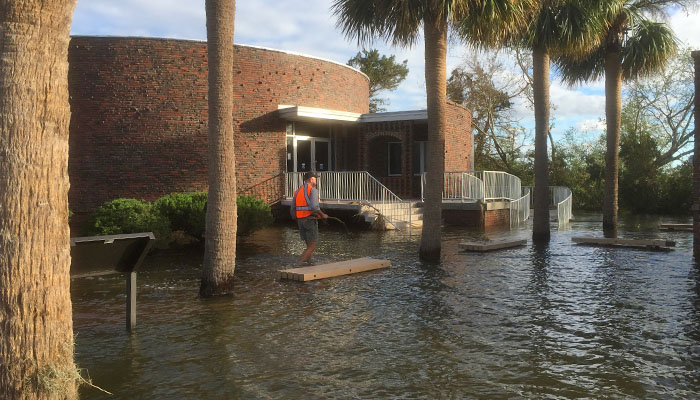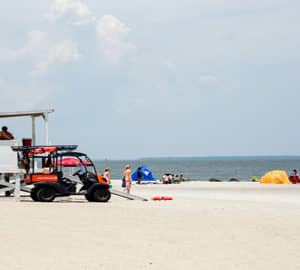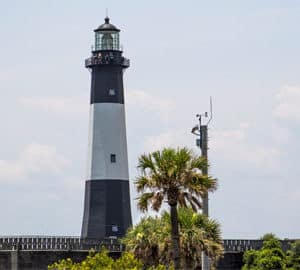Savannah’s climate is classified as humid subtropical.
As in the Deep South, Savannah experiences long and almost tropical summers and short, mild winters. Savannah records few days of freezing temperatures each year (and has rare snowfall). Due to its proximity to the Atlantic coast, Savannah rarely experiences temperatures as extreme as those in Georgia’s interior. Nevertheless, the extreme temperatures range from 105 °F (41 °C), on July 20, 1986 and July 12, 1879, down to 3 °F (−16 °C) during the January 1985 Arctic outbreak.
Seasonally, Savannah’s climate has hot and humid summers.
Frequent (but brief) thunderstorms that develop in the warm and tropical air masses are common. Although summers in Savannah are frequently sunny, half of Savannah’s annual precipitation falls during the months of June through September. Average dewpoints in summer range from 67.8 to 71.6 °F (20 to 22 °C). Winters in Savannah are mild and sunny. The average daily high temperatures close to 60 °F (16 °C). November and December are the driest months, as recorded by Savannah–Hilton Head International Airport.
Each year, Savannah reports 24 days on average with low temperatures below freezing, though in some years fewer than 10 nights will fall below freezing. Although decades might pass between snowfall events, Savannah has experienced snow on rare occasions. In December 1989, up to 3.9 in (9.9 cm) fell in one day in parts of the city. January of 2018 saw snow and ice accumulation as well.
Savannah is at risk for hurricanes.

Cape Verde type of storms that take place during the peak of the season. Because of its location in the Georgia Bight (the arc of the Atlantic coastline in Georgia and northern Florida) as well as the tendency for hurricanes to re-curve up the coast, Savannah has a lower risk of hurricanes than some other coastal cities such as Charleston, South Carolina. Hurricanes mostly spared the City, during the 20th century, with the exception of Hurricane David in 1979. However, the historical record shows that the city was frequently affected during the second half of the 19th century. The most prominent of these storms was the 1893 Sea Islands hurricane, which killed at least 2,000 people. (This estimate may be low, as deaths among the many impoverished rural African-Americans living on Georgia’s barrier islands may not have been reported.)
The active 2016 hurricane season damaged the city and surrounding areas. This included Hurricane Matthew (which made a partial eyewall landfall) and Hurricane Irma in 2017.
Article: https://www.hiltonheadisland.com/winter-weather-bomb/.


